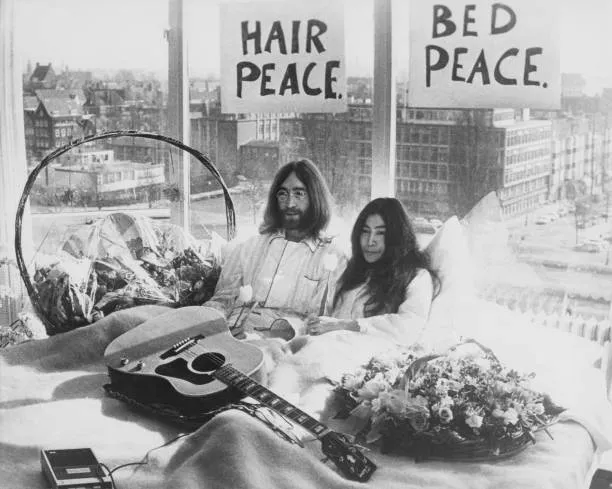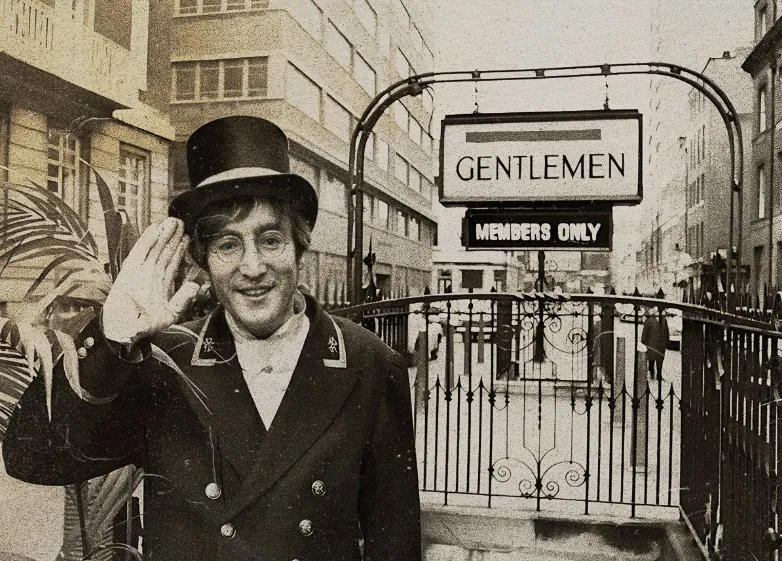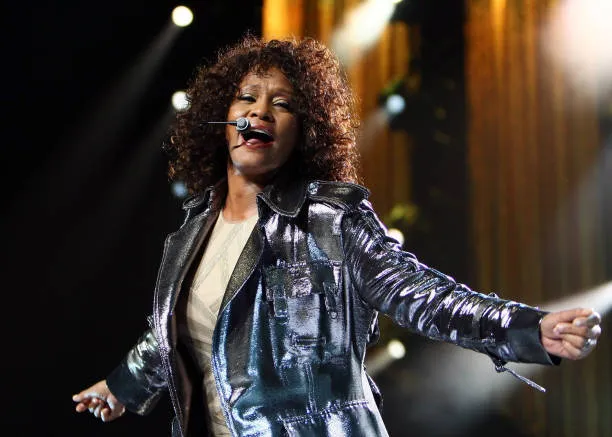When people think about The Beatles, a myriad of things might come to mind: iconic songs, legendary performances, Beatlemania.
One of the most notable and recognizable factors about the Fab Four, however, was their haircut.The Beatles haircut, also known as the "mop-top" or "Arthur" style, became synonymous with the band and the era.
But why did the Beatles have the same haircut? Let's dive into the story behind this cultural phenomenon, a tale as intertwined with their music as with their identity.
The Humble Beginnings

In the early 1960s, the world of music was ripe for something revolutionary. The Beatles, consisting of John Lennon, Paul McCartney, George Harrison, and Ringo Starr, were on the verge of becoming the defining band of this transformative period in music history.
However, at this point, their hairstyle was still quite conventional, echoing the short-back-and-sides look typical of the era.
The turning point came during a trip to Hamburg, Germany, in the early 1960s. The Beatles frequently played at clubs in Hamburg, and it was there that they encountered their now-famous haircut.
As the story goes, it was largely influenced by their close friend Astrid Kirchherr, a German photographer. Astrid was instrumental in shaping the band's early image, and she introduced the boys to something they had never seen before: Klaus Voormann's hairstyle.
Astrid Kirchherr and Klaus Voormann
Astrid's then-boyfriend, Klaus Voormann, was an artist and musician who sported a unique and decidedly avant-garde haircut for the time. His hair was cut in a rough, almost bowl-like style, reminiscent of what would later become known as the mop-top.
Upon befriending The Beatles, Astrid suggested that they might want to consider adopting this new hairstyle.
George Harrison was the first to take the leap. Legend has it that one day while staying with Astrid, she gave him a trim, and thus, the iconic Beatles haircut was born.
Slowly, the rest of the band members followed suit, with each of them adopting the hairstyle that would soon become their trademark.
The Mop-Top: Symbol of Rebellion

The Beatles haircut was more than just a style choice; it was a statement. During the conservative era of the early 1960s, men were expected to have neat, tidy haircuts.
The mop-top was a bold departure from the norm, a symbol of youthful rebellion and nonconformity. The Beatles themselves were always pushing boundaries, and this unique hairdo was a reflection of their innovative spirit.
When they returned to England from Hamburg, their new look was met with a mix of shock and admiration.
This unorthodox hairstyle was unlike anything the British public had seen on mainstream musicians. It was fresh, rebellious, and epitomized the new wave of cultural change that The Beatles would come to represent.
Beatlemania and Beyond
When The Beatles burst onto the scene in the United States in 1964, their haircut quickly became a sensation. Beatlemania took the world by storm, and fans everywhere began to copy the mop-top style.
Barbers were inundated with requests for "The Beatles haircut," and it wasn't just teenagers who embraced the look; adults and children alike wanted to emulate their favorite band.
The mop-top became a symbol of the 1960s counterculture, a rebellion against the staid norms of the previous generation. It signaled a shift in societal attitudes, representing freedom, creativity, and a break from tradition.
Maintaining the Iconic Look

Behind the scenes, maintaining The Beatles haircut required some dedication. Their hair needed to be constantly trimmed to keep the perfect length and shape.
The band's manager, Brian Epstein, understood the importance of their image and ensured that they always looked their best. He even arranged for a private hairdresser to travel with them on tours to maintain their iconic look.
The Beatles' manager understood that their appearance was part of their brand. The mop-top became as integral to their identity as their music.
It was part of what made them stand out, and in the highly competitive world of rock music, standing out was crucial.
Evolution and Legacy
As The Beatles' music evolved, so did their hairstyles. By the mid to late 1960s, the band members began to experiment with different looks.
They grew their hair longer, adopted facial hair, and each member developed a more individualistic style. The evolution of their appearance mirrored the evolution of their music, which grew increasingly experimental and complex.
Despite these changes, the mop-top remained one of the most enduring symbols of The Beatles. It is frozen in time, representing the band's early years and the initial explosion of Beatlemania.
The haircut's legacy endures in popular culture, representing a moment of seismic cultural shift and the birth of modern youth culture.
The Power of a Haircut

Why did The Beatles have the same haircut? It started as a suggestion from a friend, inspired by an artist's unique style in Hamburg.
But it became so much more: a symbol of rebellion, an emblem of the 1960s counterculture, and a key part of their brand as they rocked the foundations of music and culture.
The Beatles haircut was, and continues to be, an icon in its own right. It is a testament to how something as simple as a hairstyle can become a powerful symbol, influencing fashion, culture, and society far beyond its original scope.
The Beatles' mop-top was more than just a haircut; it was a revolution, a statement, and an indelible part of the legend of The Beatles.



